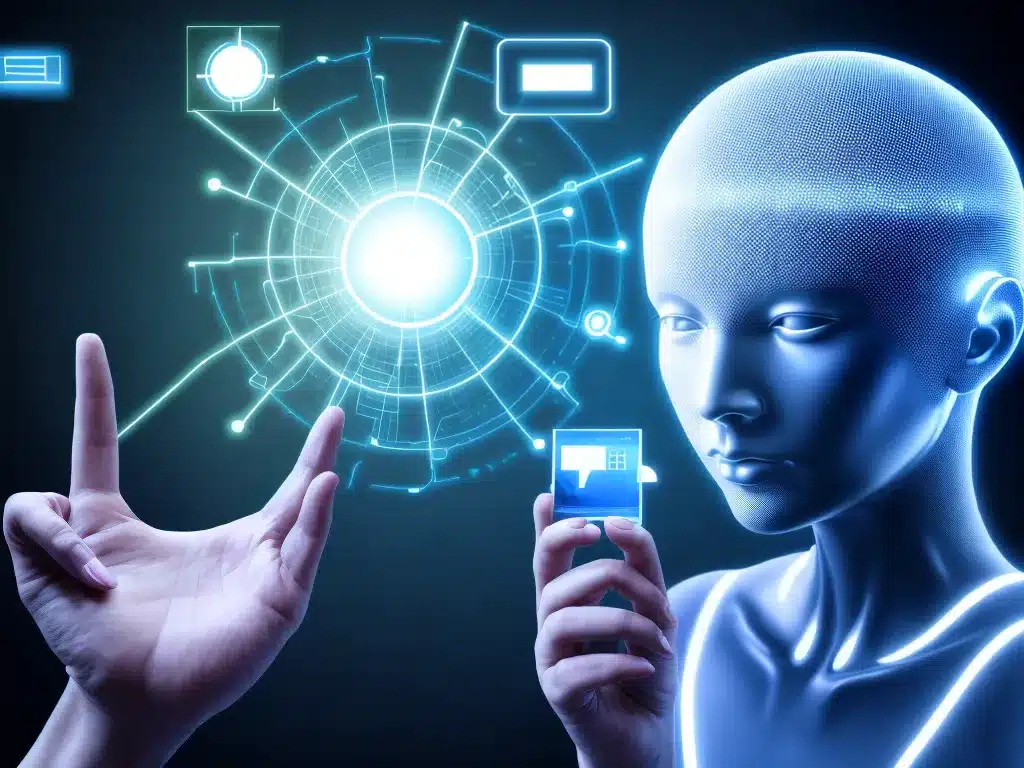
AI and IoT: A Powerful Pair in 2024
Introduction
The year 2024 will bring exciting developments in artificial intelligence (AI) and the Internet of Things (IoT). As these two technologies continue to advance rapidly, their combination will enable innovative applications that can greatly benefit society. In this article, I will provide an in-depth look at how AI and IoT will work together in 2024, and the powerful impacts this integration will have.
The Growth of AI
By 2024, AI capabilities will have advanced tremendously compared to today. Key improvements include:
-
More advanced machine learning models – New neural network architectures like transformers and capsules will allow AI systems to learn complex tasks with less data. Techniques like few-shot learning and meta-learning will also emerge to significantly improve learning efficiency.
-
Stronger natural language processing – AI assistants and chatbots in 2024 will be extremely conversational. They will understand context, intent and emotions, and respond intelligently to complex natural language queries.
-
** Increased use of computer vision** – Computer vision utilizing convolutional neural networks will become ubiquitous. AI systems will gain human-level visual perception to analyze images, videos and sensor data.
-
Reinforcement learning advancements – Algorithms like deep Q-learning will enable AI agents to excel at maximizing long-term rewards in complex environments through trial-and-error. This will be key for real-world robotic control.
-
Improved specialized AI – Beyond general intelligence, narrow AI will provide superhuman capabilities in specialized domains like protein folding, strategic gameplay, and molecule generation.
The IoT Explosion
By 2024, IoT devices will be widespread in homes, cities, factories and businesses. Key projections include:
- Over 30 billion IoT devices worldwide.
- 5G networks enabling massive IoT scalability.
- Increased smart home adoption, with over 50% of US households having at least one smart home device.
- Industrial IoT driving automation, analytics and efficiency in manufacturing and supply chains.
- Smart cities using IoT sensors to monitor infrastructure, optimize transport, and improve sustainability.
In summary, extremely versatile, low-cost sensing of the physical world will lead to an explosion of IoT ubiquity.
Combining AI and IoT
As both technologies mature, AI and IoT will increasingly work together to drive impact:
Processing and Analysis of IoT Data
-
The massive amount of data generated by IoT sensors will become practically valuable when processed by AI algorithms.
-
AI techniques like machine learning, natural language processing, computer vision, and predictive analytics will all be used to extract insights from IoT data.
-
For example, surveillance cameras coupled with computer vision can track customer engagement in stores. Supply chain sensors connected to predictive algorithms can forecast demands and mitigate shortages.
IoT Actuation and Control
-
IoT creates opportunities to monitor and control the physical environment with AI agents.
-
Homes, factories, farms, and cities can optimize energy usage, productivity, and efficiency with AI control systems.
-
Autonomous IoT systems can also react intelligently to environmental stimuli with machine learning models. Traffic signals can optimize traffic flow based on cell phone data. Smart grids can adjust power distribution based on demand prediction algorithms.
Conversational Interfaces
-
With natural language processing advancements, conversational agents will become commonplace as natural interfaces for IoT systems.
-
Rather than typing on screens, we can simply talk to our smart home devices, vehicles, and robots to control them and interpret their sensor data.
-
Intelligent voice-based digital assistants will transform how we interact with IoT systems, unlocking the power of these technologies for regular consumers.
Increased Automation
-
As IoT environments become highly sensored and supported by AI, automation will greatly increase.
-
Self-driving cars, smart factories with robot coworkers, fully-automated supply chains, and personalized healthcare driven by wearables are all powered by the AI + IoT combination.
-
This can free up human time and labor to focus on higher-level tasks and innovation. But ethical challenges around loss of jobs and oversight will need addressing.
Key Challenges
To maximize the benefits as AI and IoT converge, several challenges still need to be addressed:
-
Privacy and security – Data theft and misuse is a concern as more sensitive user data is collected by IoT devices and processed by AI systems. Strict regulations for data transparency and consent will need to be enforced.
-
Technical limitations – Seamless integration between heterogeneous devices, networks and AI algorithms will require overcoming technical differences. Open standards for interoperability will accelerate combined adoption.
-
AI safety – With IoT, malicious actors could potentially manipulate the physical environment if they compromise connected AI agents. Developing AI that is safe, secure and robust will be critical.
-
Job displacement – As AI + IoT automation increases, many jobs could become redundant or change drastically. Proactive policies around job retraining and new labor policies may be required to ease this societal transition.
The Future Looks Bright
The integration of AI and IoT in 2024 will bring many exciting possibilities. Homes, businesses, and cities will become smarter and more efficient. Conversational interfaces will make interacting with technology far more natural. Automation will lead to improvements in productivity, cost savings and safety across many industries. Powered by the potent combination of AI and IoT, the world is on the cusp of major technological transformation that can hugely benefit humanity. But key challenges like privacy, security, interoperability and job displacement will also need to be responsibly addressed as we build this future.












